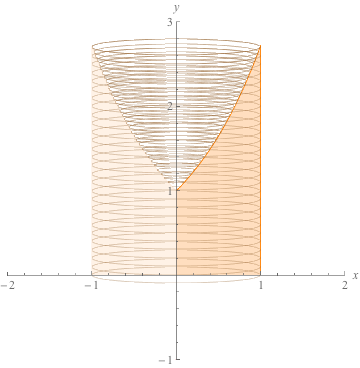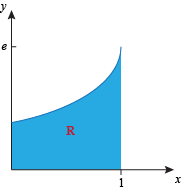If it looks like a duck, walks like a duck, and quacks like a duck, it must be a duck, right? Not in the case of shells and washers.
Even though we can use either method to do the same thing, we all know that metal washers and toilet paper tubes are nothing alike. One we are happy to use, while the other we are begrudged to see in what becomes a moment of desperation. The integration methods have some differences as well.
1) When using the washer method, we make cuts perpendicular to the axis of rotation. When using the shell method, we make our cuts parallel to the axis of rotation. Either way, the axis of rotation goes through the middle of the round thing. Got it?
2) When using the washer method, if we rotate around a horizontal axis we use y as the variable of integration. When using the shell method, if we rotate around a horizontal axis we use x as the variable of integration.

3) The two methods are based on different formulae. The washer method uses the formula for volume of a washer
π[(router)2 – (rinner)2] Δ x (or Δ y)
The shell method uses the formula for volume of a shell
2πrh Δ x (or Δ y)
In particular, the washer method involves squaring radii and the shell method doesn't.
Of course, we now have to ask which method is better. Would we rather use a washer or a toilet paper tube?
Most of the time we can use whichever method we like better. If a problem specifies a method, of course we should use that method (although if it's not the one we like and we have extra time, we could make sure both methods give us the same answer).
Every once in a while, there are some solids for which one method will be easier than the other.
Exercise 1
Find the volume of the solid generated when the region bounded by ex and the x-axis on the interval [0,1] is rotated around the y-axis, using
(a) the washer method
(b) the shell method
Exercise 2
Let R be the region bounded by the graph y = 2x – x2 and the x axis.
(a) Sketch the solid obtained by rotating R around the y-axis.
(b) Is it easier to use washers or shells to find the volume of the solid you drew in (a)? Why?
(c) Write an integral expression for the volume of the solid you drew in (a).






